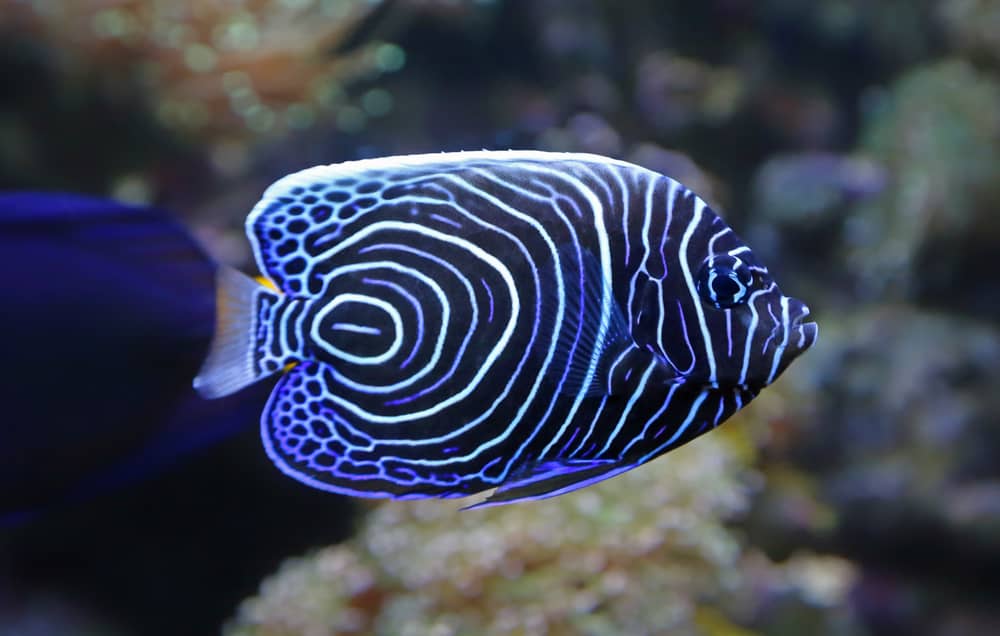
Saltwater tanks are always a great source of entertainment to have around the home, especially when the majestic emperor angelfish are involved.
Whether you’re looking to add emperor angelfish to your existing aquarium or putting together your first reef tank from scratch, we know that there’s an important question at hand: are emperor angelfish reef safe?
The answer might surprise you.
Are Emperor Angelfish Reef Safe?
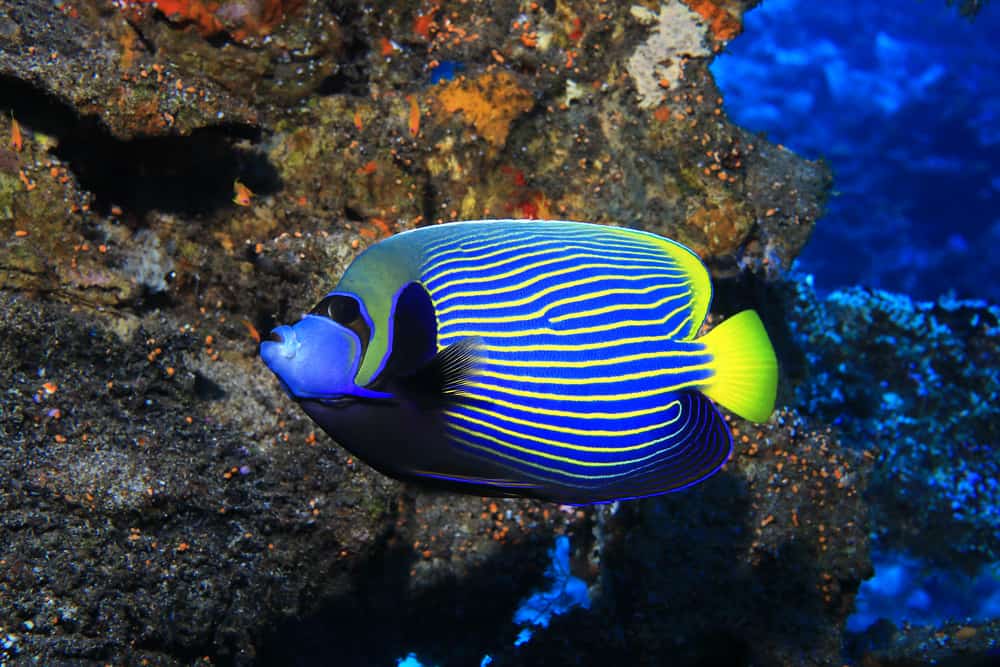
The short answer is no, emperor angelfish are not generally reef safe.
While their natural habitats in the ocean are usually reef areas, providing them with the right conditions in their tank can be quite tricky.
Emperor angelfish tend to nip at coral, so it’s important to provide them with coral they cannot destroy if you truly have your heart set on keeping them in a reef tank.
If they’re kept with the wrong type of coral, they will mow it down in no time.
Before we delve into their tank care, it’s important to begin with their basic needs that go beyond their aquarium’s environment.
Caring for Your Emperor Angelfish
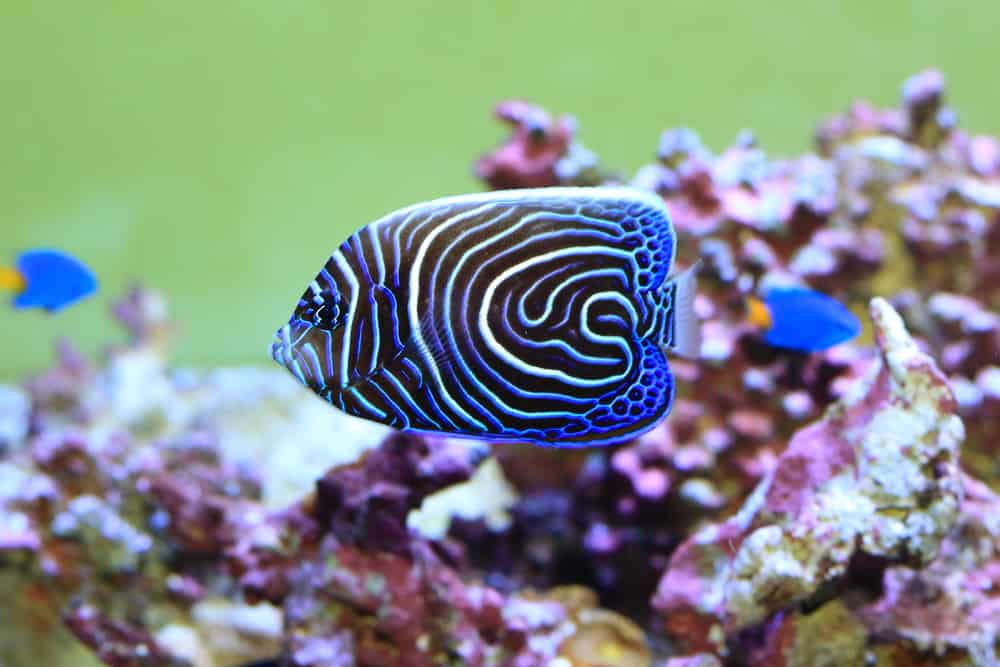
These semi-aggressive creatures require a lot of room to thrive, with their ideal tank size being 125 gallons to start with, and that’s just for a juvenile.
For a breeding pair, you will need a tank of at least 180 gallons.
Emperor angelfish are very prone to various illnesses and require tank water that meets some very specific parameters in addition to having enough space.
Their tank should have a pH level of between 8.1 and 8.4, a water temperature of between 72 and 82 degrees, and a specific gravity of between 1.023 and 1.025.
Feeding your emperor angelfish can prove to be a bit of a challenge as they may refuse food when they are introduced to a new tank.
This can depend on the age of the fish, but no matter the age, it’s better to be prepared.
You want to feed them their food while they acclimatize.
These omnivorous fish should be fed a balanced diet of both meat and plant matter, including sponge material.
However, their diet isn’t easy to replicate, as they require a variety of small organisms, algae, and sponges, which can be somewhat expensive.
As for their tankmates, they can be difficult to house with most other fish.
They won’t get along with smaller, peaceful fish, and may have aggressive tendencies towards other angelfish.
Since they’re omnivores, it’s also important that you do not house them with smaller fish that they may eat.
Tankmates
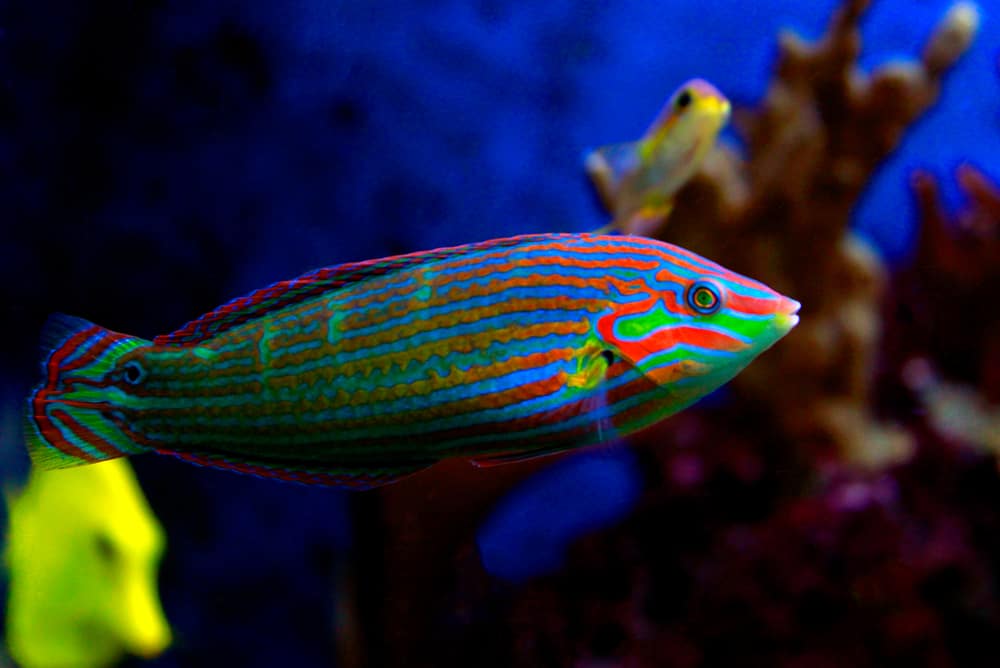
You may be wondering if you can provide tankmates for your emperor angelfish at all, and the answer is yes, you can.
It’s best to house them with smaller, aggressive fish that can hold their own.
Just be careful when housing them with smaller fish because, as we’ve said, your emperor angelfish may attempt to eat them.
If you attempt to house them with larger semi-aggressive fish, like tangs, for example, they will need to be monitored closely.
There are a few options as far as tankmates go, with some of the best being damselfish, dottybacks, and wrasses.
1. Damselfish
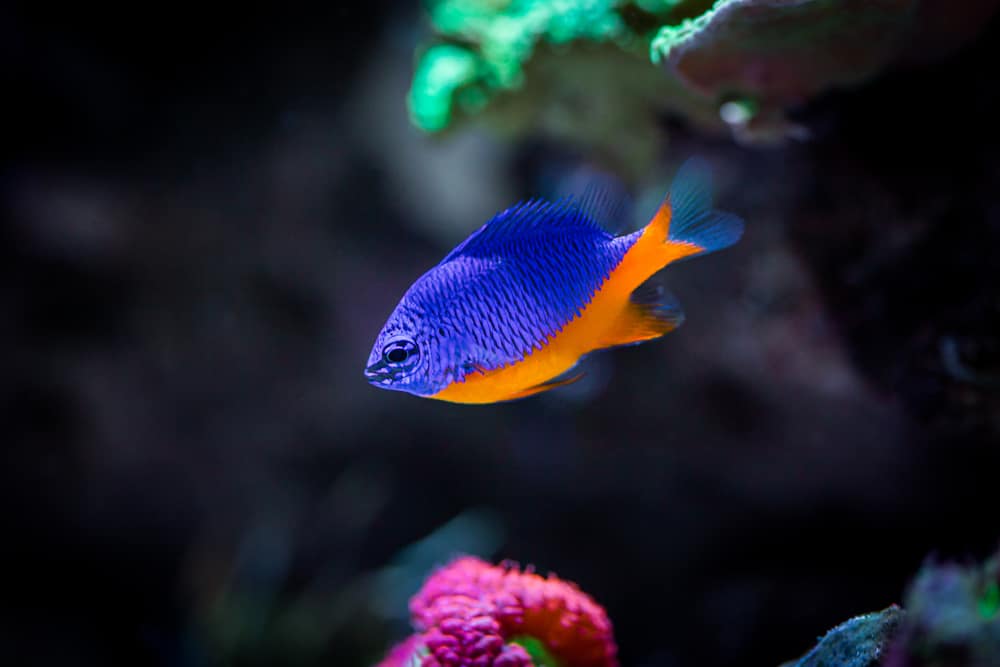
These tiny saltwater fish can truly hold their own, making them a fine candidate for being an emperor angelfish’s tankmate.
They’re hardy and fairly easy to keep, with their minimum tank size being 30 gallons, and the fact that they are reef compatible.
Their tank’s water temperature should be between 73 and 81 degrees, have a pH balance of between 8.1 and 8.4, and a specific gravity of between 1.020 and 1.025.
They can be either carnivorous or omnivorous, depending on what type of damselfish you plan on keeping.
Their compatibility with other fish matches up with that of the emperor angelfish for the most part.
In addition to that, there should only be one species of damselfish in the same aquarium at a time.
It’s also important to properly introduce them to your aquarium and your other fish.
Damselfish should be the last fish you add to your tank, so the other species have a chance to claim their territory.
2. Dottybacks
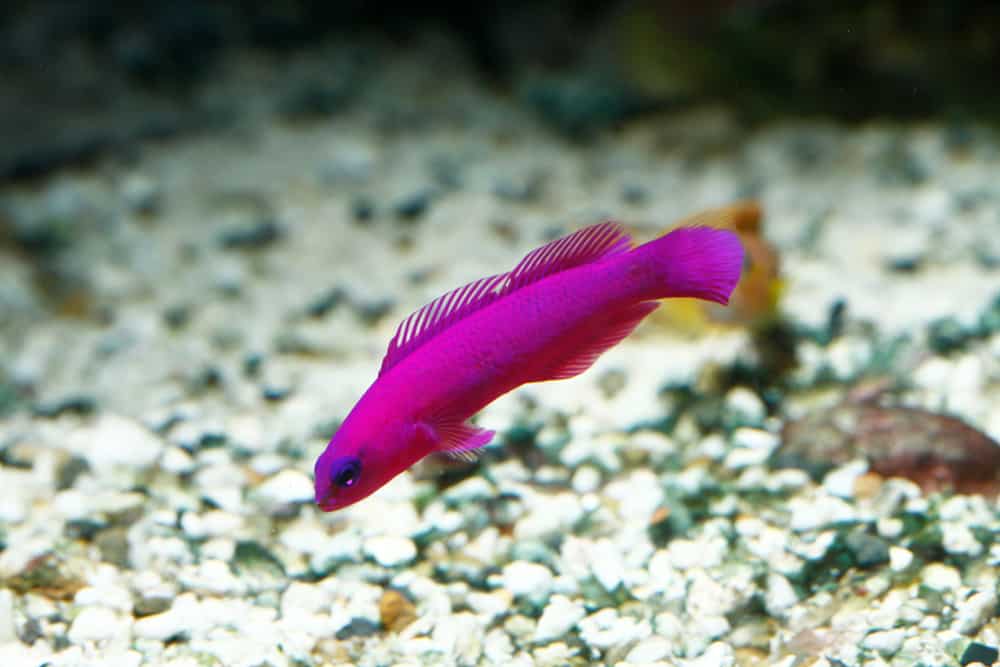
Next on our short list of emperor angelfish companions are dottybacks.
They can be challenging when it comes to their aggressive nature, as they are highly territorial.
These fish do best in aquariums where there are plenty of crevices and caves for them to hide in, as they prefer dimly lit aquariums.
Dottybacks are carnivores, and they should be fed live food.
Their tank conditions can vary, so it’s important for you to acquire that information when you purchase your fish in order to provide them with the proper temperature, pH, and specific gravity.
There are quite a few different types of Dottybacks to choose from, so choose wisely when choosing your emperor angelfish’s new tankmates!
Wrasses
Finally, you can house your emperor angelfish with wrasses.
These active fish love having plenty of room to swim and explore, but they are also skilled jumpers and require a tank with a cover.
Since these fish are generally carnivores, they need to feed on various invertebrates.
They are reef safe, but specifications about their care should be acquired upon buying wrasses for your tank.
It’s important to choose the right tankmates for your emperor angelfish because this choice can impact them in many ways, including their health.
Illness in Emperor Angelfish
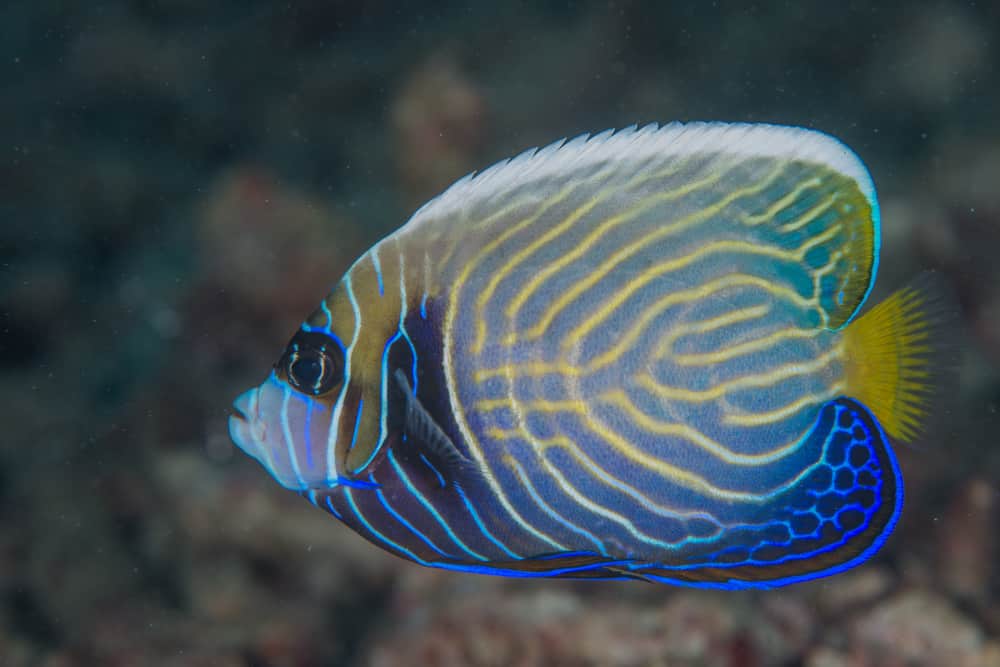
Emperor angelfish, as we’ve already mentioned, are prone to various illnesses, which can be brought on by a few different causes, including improper tank mates and wrong housing.
The most common illnesses that may befall your fish are Marine Velvet and White Spot Disease.
Marine Velvet is a parasitic skin flagellate that causes a fish’s cells to appear covered in something that looks like pepper.
These spots can cause clamped fins, respiratory distress, and weight loss.
Marine Velvet should be treated as quickly as possible as this disease has a high mortality rate, meaning it’s crucial to give your fish a fighting chance by catching this illness quickly.
One common treatment for Marine Velvet is using copper, as long as the right levels of copper are used in the water.
However, copper is toxic to invertebrates, and should not be used in any tanks they currently, or may eventually, reside in.
White Spot Disease is likely something you’ve encountered before if you’re an experienced aquarist.
Also known as Ich, White Spot Disease is when white dots begin to appear on a fish’s body, causing your fish to scratch itself.
Ich usually settles in and affects fish when there is poor water quality in their tank, meaning the best way to treat Ich is to improve water conditions.
If left untreated, the Ich will spread and block the gills, suffocating the fish.
If you have serious concerns with regard to the health of your fish, it’s best to consult a veterinary professional.
If you notice an illness affecting your emperor angelfish, it’s best to move them to a quarantine tank before attempting to treat their illness.
This will also prevent whatever is affecting them from spreading to the other fish in your tank.
The best way to combat both White Spot Disease and Marine Velvet at home is to keep the water conditions just right and keep your saltwater tank clean.
Maintaining a Saltwater Tank
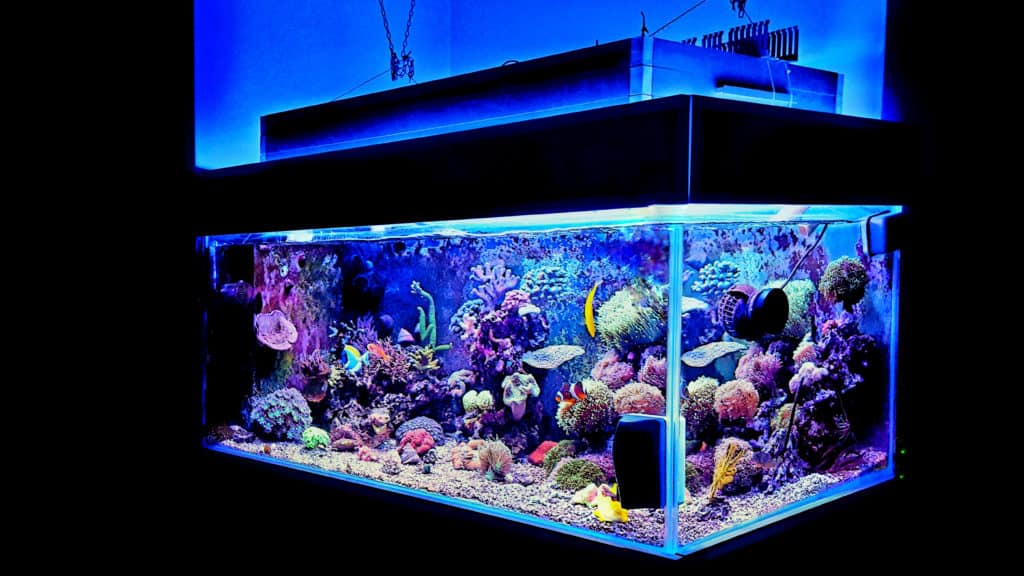
No matter what fish you house with your emperor angelfish, you need to meet the tank requirements for every creature that lives in your home aquarium.
Emperor angelfish require a fairly large tank of at least 125 gallons for a juvenile, and if you plan on taking in a breeding pair, they need 180 gallons at the very least.
The water movement should be slow, but they can tolerate almost all types of water movement.
Their tank’s setup should be full of live rock for your fish to graze on, an abundance of hiding places, and plenty of open space for them to swim in.
Also, remember that emperor angelfish’s feeding requirements leave behind a large bio-load.
To keep your tank’s water at its best, your tank should be fully cycled and set up for at least six months prior to introducing your emperor angelfish.
After they have been introduced to their new tank, it’s important that regular water changes are performed, and tests are done in between changes to ensure your water is always the best quality it can be.
It’s generally a good idea to change 15% of your tank’s water every two weeks, lessening the amount if the tank has coral.
If you choose to attempt to build a reef for your emperor angelfish, it’s important that you choose the right coral for them, and you’re ready to shoulder a lot of new responsibilities.
Which Corals Can Be Kept with Emperor Angelfish?
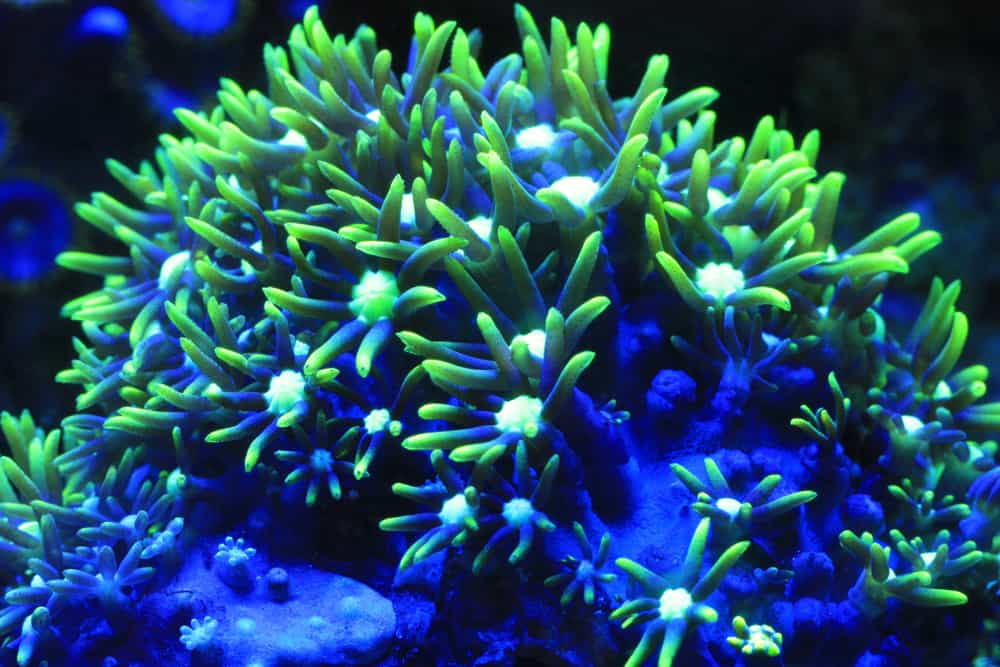
A good place to start when it comes to building them a reef is to determine which corals they aren’t likely to nip at.
That means that you should avoid soft and stony corals in general and lean towards small-polyp stony corals instead.
A few of the best corals for your emperor angelfish’s tank are bubble corals, disc anemones, and star polyps.
Bubble coral has a moderate care level: It enjoys low levels of water movement, a pH of between 8.1 and 8.2, and temperatures that are between 74 and 83 degrees.
Disc anemones require standard anemone care: They enjoy water with a pH of between 8.1 and 8.3, a specific gravity of between 1.024 and 1.026, and temperatures of between 76 and 78 degrees.
Finally, star polyps can be one of the easiest corals to keep with emperor angelfish because they’re extremely hardy, fast growing, and are generally easy to care for.
Star polyps do best in water with a pH balance of 8.2, a specific gravity of 1.025, and temperatures between 78 and 82 degrees.
However, just because you don’t house your emperor angelfish with soft coral doesn’t mean that tougher, hardier corals are completely safe.
It’s important to house the proper corals together and be prepared for your coral to take at least a little damage if you don’t monitor your fish closely.
To Reef or Not to Reef
Now you know exactly how to care for your emperor angelfish in their new home, even if that home isn’t a reef.
Whether you decide to build your tank around your fish or choose fish that will do well in your pre-existing reef tank, we’re sure your aquarium will turn out amazing.
Best of luck to you, your coral, and the fish you keep.
We’re sure you’ll do great!
How are your emperor angelfish doing?
Do you have any tips or advice you’d like to share?
Did you decide to house your emperor angelfish in a reef?
If so, what type of coral do you house with them?
Leave us a comment below.
We always look forward to hearing from our readers.
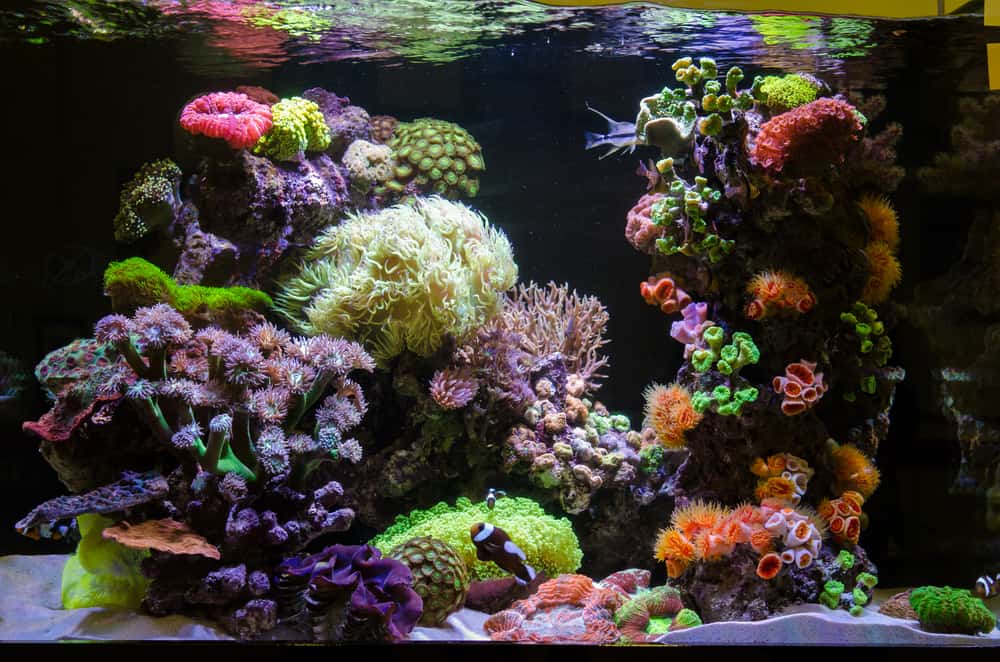
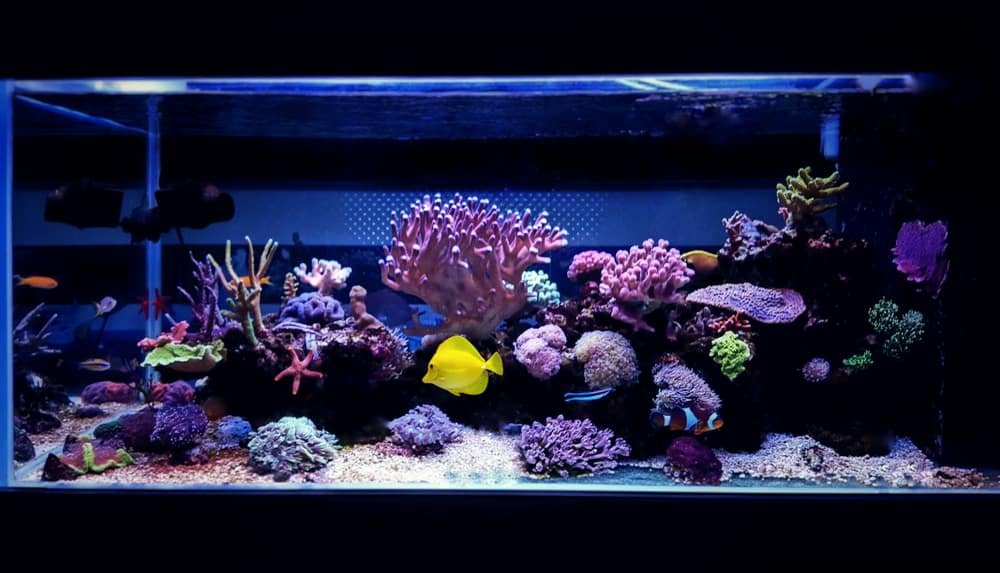
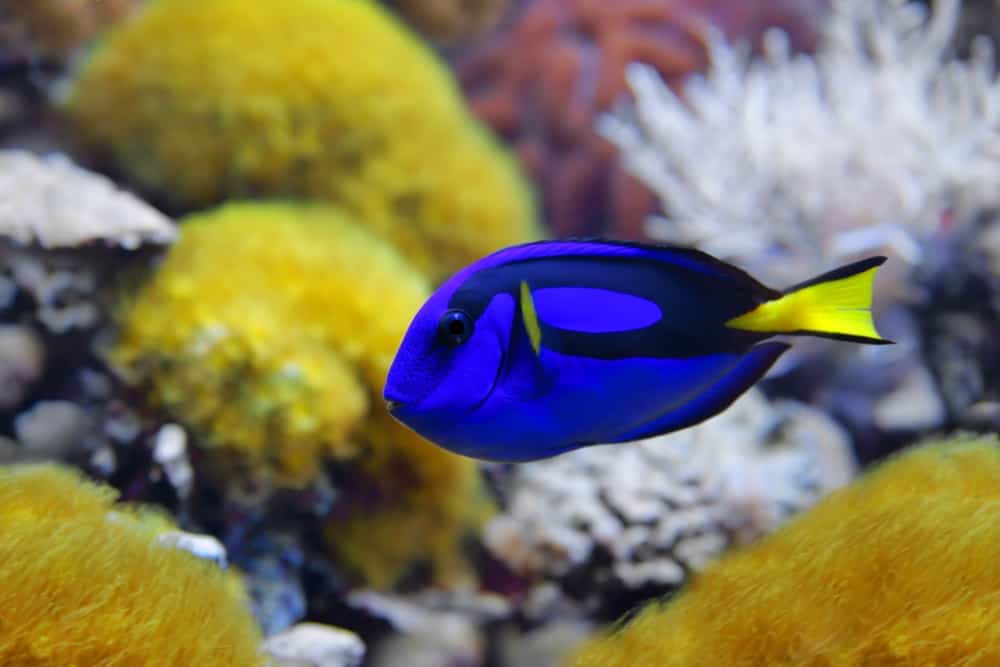
Leave a Reply